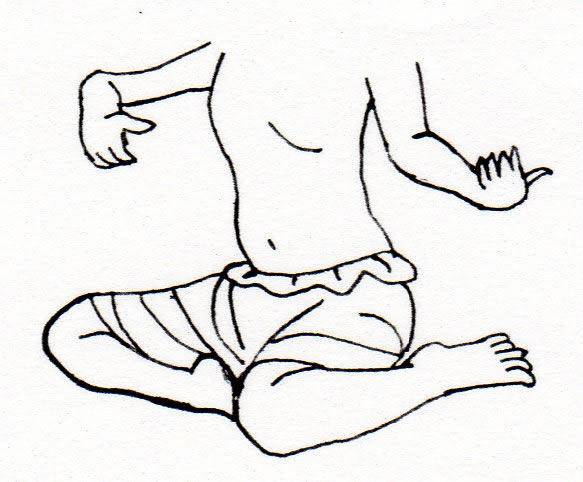|
||
 |
||

@
(C)2001 Japanese Architecture and Art Net Users System.@No reproduction or republication without written permission.
fΪΜeLXgEΚ^ECXgΘΗASΔΜRecΜ³f‘»E]ΪπΦΆά·B
|
||||||
| @ | ||||||
| kiza@₯Ώ | ||||||
| KEY WORD :@art history / sculptures | ||||||
| @ | ||||||
| A seated position of Buddhist images in which both legs are stretched out to one side. The name of this position is derived from the winnow ₯ (pronounces ki or mi), as it is said to resemble this agricultural instrument. This relaxed posture is found on the Benzaitenzou ΩΰV at Tsurugaoka Hachimanguu ίͺͺ¦{ (1266) and on the Yuima Kojizou Ϋm at Shoumyouji ΜΌiKamakura period), both in kanagawa prefecture. Some sources indicate the kiza also refers to a seated position with one knee raised and the other folded in front of the body, as in the *rinnouza Φ€Ώ position. The sculpture of the priest Gyouga sκ from The Six Patriarchs of the Hossou sect, Hossou Rokusou @Zc in Koufukuji » (1189) is an example of a work considered to be in the alternate form of this position. | ||||||
| @ | ||||||
 |
||||||
@ |
||||||
| REFERENCES: | ||||||
| @ | ||||||
| EXTERNAL LINKS: | ||||||
| @@ | ||||||
| NOTES: | ||||||
| @ | ||||||
(C)2001 Japanese Architecture and Art Net Users System.@No reproduction or republication without written permission. fΪΜeLXgEΚ^ECXgΘΗASΔΜRecΜ³f‘»E]ΪπΦΆά·B |
||||||
| @ |